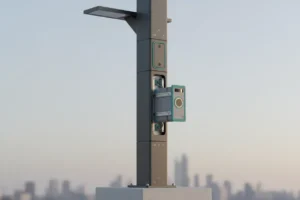Urban transit is evolving rapidly, with cities worldwide implementing innovative solutions to improve mobility. This article examines real-world examples of cutting-edge transit technologies, from unified app-based systems to autonomous shuttles. Drawing on insights from industry experts, we explore how these advancements are reshaping urban transportation and enhancing the daily commute for millions.
- Helsinki Unifies Transit with Whim App
- Seoul Redesigns Bus Routes in Real Time
- Copenhagen Builds Bike-Friendly Infrastructure
- Las Vegas Tests Small-Scale Autonomous Shuttles
- Singapore Smoothly Transitions to Contactless Payments
Helsinki Unifies Transit with Whim App
As someone who works in systems design — albeit in gaming — I’m fascinated by how cities structure user experiences at scale. One city that nailed this is Helsinki. Their Whim app, a mobility-as-a-service (MaaS) platform, lets users plan, book, and pay for trains, buses, taxis, scooters, and even rental cars all in one place. It’s not just tech — it’s transit reimagined around the user journey, not the agency.
The lesson? Don’t focus on building new infrastructure first — focus on integrating what you already have. Helsinki didn’t create new buses or trains; they created a seamless digital layer that turned fragmented options into a single experience. That mindset is gold: think platforms, not products. It’s the same approach we use in gaming to unify cross-platform features — and it’s how cities can modernize fast, without massive upfront costs.
 Marin Cristian-Ovidiu
Marin Cristian-Ovidiu
CEO, Online Games
Seoul Redesigns Bus Routes in Real Time
I love this question because transit isn’t just about moving people — it’s a living, breathing system that reflects how a city thinks.
Seoul is one of the most underappreciated examples of smart transit implementation — not because of shiny maglev trains or flashy apps, but because of one simple shift that almost nobody talks about: real-time route redesign based on dynamic data and commuter patterns.
Back in the mid-2000s, Seoul’s bus system was a mess — unpredictable, inefficient, and neglected. What changed everything wasn’t a moonshot. It was this: they started using GPS and smart cards not just for tracking or payments, but to redesign routes in real time. They literally altered where buses went and how frequently they showed up based on actual usage patterns — down to the time of day and neighborhood-level demand. Most cities collect data. Seoul acts on it — immediately.
And here’s the kicker: it was paired with public transparency. Every change was posted online. Commuters could see why routes changed, and even vote or give feedback. It created a feedback loop where citizens became part of the routing engine. The result? Ridership went up, wait times dropped, and public satisfaction spiked — all from what amounts to a policy tweak and a decent algorithm.
The takeaway for other cities? You don’t need billions in funding or a Silicon Valley-style overhaul. The real leap is treating your transit network like a software product: test, iterate, ship updates daily. Imagine if buses worked like Spotify recommendations — always adapting, always learning. Seoul’s already halfway there.
 Derek Pankaew
Derek Pankaew
CEO & Founder, Listening.com
Copenhagen Builds Bike-Friendly Infrastructure
One city that really stands out for its innovative approach to transit is Copenhagen, Denmark. They’ve pushed the boundaries with their cycling infrastructure, which is so comprehensive it’s like highways for bikes! They have managed to make cycling a viable and preferred mode of transport for many people by ensuring safety and efficiency through dedicated bike lanes, clear signage, and cyclist-focused traffic lights.
The key takeaway from Copenhagen’s success is the importance of tailoring transit solutions to fit the city’s unique needs and culture. Rather than just copy-pasting solutions from elsewhere, they built on the existing popularity of cycling in Denmark. This approach not only reduced traffic congestion but also enhanced the overall quality of city living. So, for any city looking to upgrade its transit systems, it’s quite important to consider what’s already working locally and how new initiatives can enhance or complement those existing practices. You have to start with what you know works, then innovate from there!
 Alex Cornici
Alex Cornici
Marketing & PR Coordinator, Magic Hour AI
Las Vegas Tests Small-Scale Autonomous Shuttles
Las Vegas quietly pulled off something impressive with their autonomous shuttle pilot in the downtown Fremont area. Instead of hyping it up and scaling too fast, they ran small, controlled tests with real passengers, focused on safety and feedback, and partnered closely with local businesses to ensure the shuttle actually solved a problem — not just looked futuristic. The lesson? Don’t launch for PR — launch for practicality. Start small, listen carefully, and make sure the technology fits the actual daily rhythm of the city. Flashy fails fast — function sticks.
 Justin Belmont
Justin Belmont
Founder & CEO, Prose
Singapore Smoothly Transitions to Contactless Payments
I’ve followed Singapore’s adoption of account-based ticketing closely — where commuters use contactless bank cards or mobile wallets instead of dedicated transit cards. It’s seamless, intuitive, and reduces the need for top-ups or kiosks. What made this work wasn’t just the technology; it was the rollout strategy. Authorities piloted it quietly, kept the legacy system as a backup, and educated commuters through clear messaging. Other cities can learn from that layered transition — introduce innovation without forcing a sudden switch. Change management isn’t just a back-end concern; it’s part of the user experience. Adoption rises when convenience, not compliance, leads the way.
 Eugene Leow Zhao Wei
Eugene Leow Zhao Wei
Director, Marketing Agency Singapore




